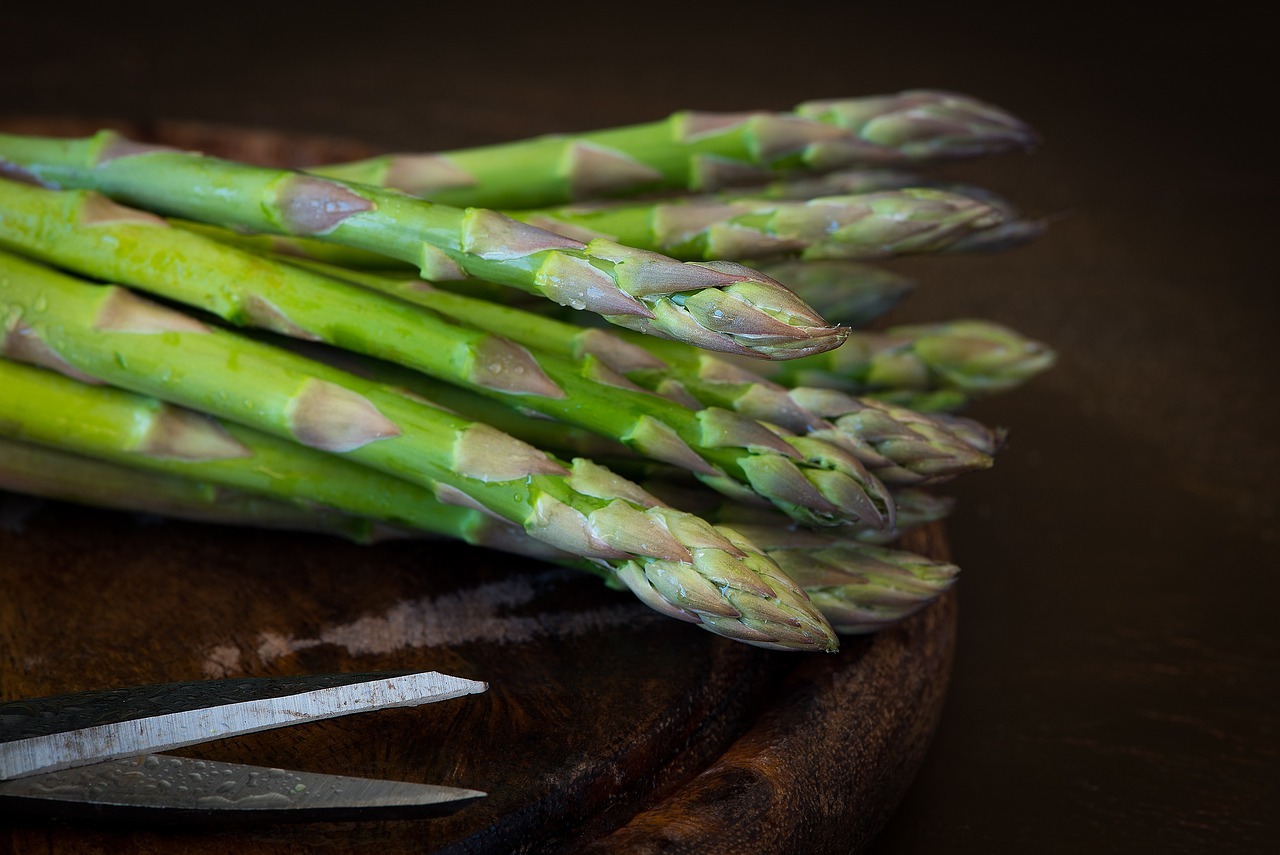Aspargus is native to Europe, northern Africa, and western Asia.
Asparagus may be purchased fresh in season, or frozen/canned for year round consumption.
Fresh asparagus is used in many cuisines and may be eaten raw (blanched), fried, grilled, steamed, or boiled. It is used in soups, salads, stir fry, dipped in sauce, or eaten as is.
How much does asparagus weigh?
| Asparagus | |||
|---|---|---|---|
| Spear, Extra Large | 8-3/4″ to 10″ Long | 24g | 0.9oz |
| Spear, Large | 7-1/4″ to 8-1/2″ Long | 20g | 0.7oz |
| Spear, Medium | 5-1/4″ to 7″ Long | 16g | 0.6oz |
| Spear, Small | 5″ or Less in Length | 12g | 0.4oz |
| Spear Tip | 2″ or Less in Length | 3.5g | 0.1oz |
| Cup | 134g | 4.7oz | |
Nutritional Profile of Asparagus
Asparagus is a nutritional powerhouse, low in calories yet rich in essential vitamins and minerals. A serving of asparagus provides a good source of fiber, which promotes digestive health and helps maintain a healthy weight. It’s also an excellent source of folate, essential for DNA synthesis and cell health, making it a particularly important vegetable for pregnant women. Asparagus is high in vitamins A, C, and K, supporting immune function, vision, and bone health. Moreover, it contains a unique compound called asparagine, an amino acid that acts as a natural diuretic, helping to flush excess fluid and salt from the body.
Health Benefits of Asparagus
Antioxidant Properties
Asparagus is rich in antioxidants, including vitamins C and E, flavonoids, and polyphenols. These compounds help neutralize harmful free radicals, reducing oxidative stress and lowering the risk of chronic diseases such as heart disease and cancer.
Heart Health
The high levels of fiber, folate, and vitamins found in asparagus contribute to heart health by reducing inflammation, lowering blood pressure, and improving overall cardiovascular function.
Digestive Health
The dietary fiber in asparagus promotes regular bowel movements and supports a healthy digestive tract. Inulin, a prebiotic fiber found in asparagus, nourishes beneficial gut bacteria, enhancing nutrient absorption and immune function.
Culinary Uses of Asparagus
Asparagus can be enjoyed in a myriad of culinary applications, from simple steamed spears to complex dishes that showcase its versatility. It pairs well with a variety of flavors, including lemon, garlic, Parmesan cheese, and hollandaise sauce. Asparagus can be grilled, roasted, blanched, or stir-fried, making it a flexible addition to any meal. It’s equally delicious served as a standalone side dish or incorporated into salads, pasta, risottos, and quiches.
